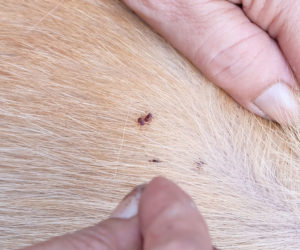To check for fleas on your dog, look for excessive scratching, redness, or small black specks in the fur. Flea combing is a helpful tool to find live fleas or flea dirt on your dog.
Additionally, checking for flea dirt on white paper towels after combing can help determine if your dog has fleas. Running your hands over your dog’s fur can also reveal flea activity. If you notice any signs of fleas, it’s essential to consult your veterinarian for the appropriate treatment.
Is your furry friend feeling itchy? You may be wondering if your dog has fleas. Fleas are a common problem for dogs, causing discomfort and potential health issues. Identifying if your dog has fleas is crucial for their well-being. We will explore the signs and symptoms of flea infestation, how to check for fleas, and what to do if your dog has them. By knowing the signs and taking action, you can help keep your dog happy, healthy, and flea-free.
Scratching And Biting Behavior
Scratching and Biting Behavior: If your dog exhibits excessive scratching and licking or has red and inflamed skin, these could be signs of a flea infestation. Fleas are adept at hiding in a pet’s fur and can cause intense itching, leading dogs to continuously scratch and bite themselves in an attempt to alleviate their discomfort. It’s important to regularly inspect your dog’s fur for fleas and their telltale droppings to ensure their well-being.
Flea Dirt And Flea Eggs
`Flea dirt can be identified as small black specks in the fur, resembling ground black pepper. Use a fine-toothed comb to part your dog’s fur and look for these tiny black granules. Flea eggs are tiny, white, and oval-shaped, resembling grains of salt. They are often found on the fur close to the skin. If you notice either flea dirt or flea eggs on your dog, it’s important to take action promptly to address the flea infestation. Regular grooming and using flea prevention products can help keep your dog free from fleas. Consulting a veterinarian for the best flea treatment and prevention options is also recommended for your dog’s health and comfort.
Visual Inspection For Fleas
Finding live fleas on the dog’s body: To check for live fleas, part your dog’s fur and look for small, dark insects scurrying around. Pay close attention to areas like the neck, tail, and belly where fleas tend to hide.
Checking for flea bites and skin irritation: Look for signs of flea bites, such as small red bumps and skin irritation. Examine areas with less fur, like the belly and inner thighs, for evidence of flea activity.

Credit: www.hartz.com
Frequently Asked Questions Of How Can I Tell If My Dog Has Fleas
How Do I Check My Dog For Fleas?
To check your dog for fleas, part their fur and look for small black specks, called flea dirt, on their skin. Use a flea comb to comb through their fur and look for fleas or their eggs. Keep an eye out for any excessive scratching or biting.
Regular grooming and preventative measures are key.
Can My Dog Have Fleas If I Don’t See Them?
Yes, your dog can have fleas even if you don’t see them. Fleas are small and can hide in your dog’s fur, making them difficult to spot. Regular flea prevention is essential to keep your dog free from these pests.
What Are Symptoms Of Fleas On Dogs?
Symptoms of fleas on dogs include scratching, biting, redness, and hair loss. Other signs may include flea dirt, skin irritation, and allergic reactions. Regular grooming and flea prevention can help keep your dog comfortable and healthy.
What Kills Fleas On Dogs Instantly?
To instantly kill fleas on dogs, use a topical flea treatment or oral medication prescribed by a veterinarian. Regular grooming and vacuuming can also help control fleas. Keep the dog’s environment clean to prevent re-infestation.
Conclusion
Fleas can cause discomfort for your dog, but with diligence, you can identify and treat them effectively. Regular grooming and observation are essential for early detection. As a responsible pet owner, it’s important to stay informed about flea prevention and treatment.
By staying informed, you can ensure your dog stays healthy and flea-free.


